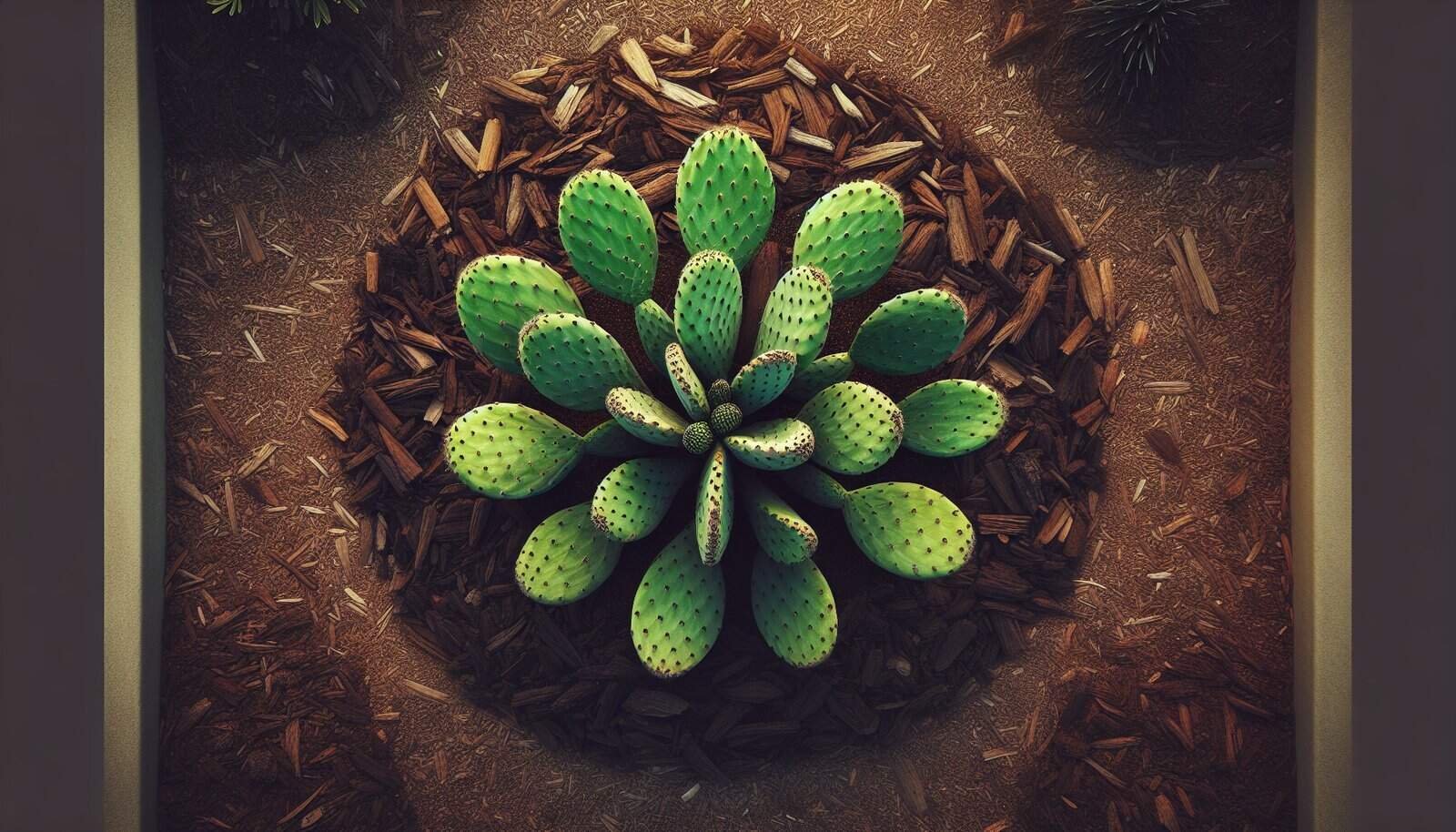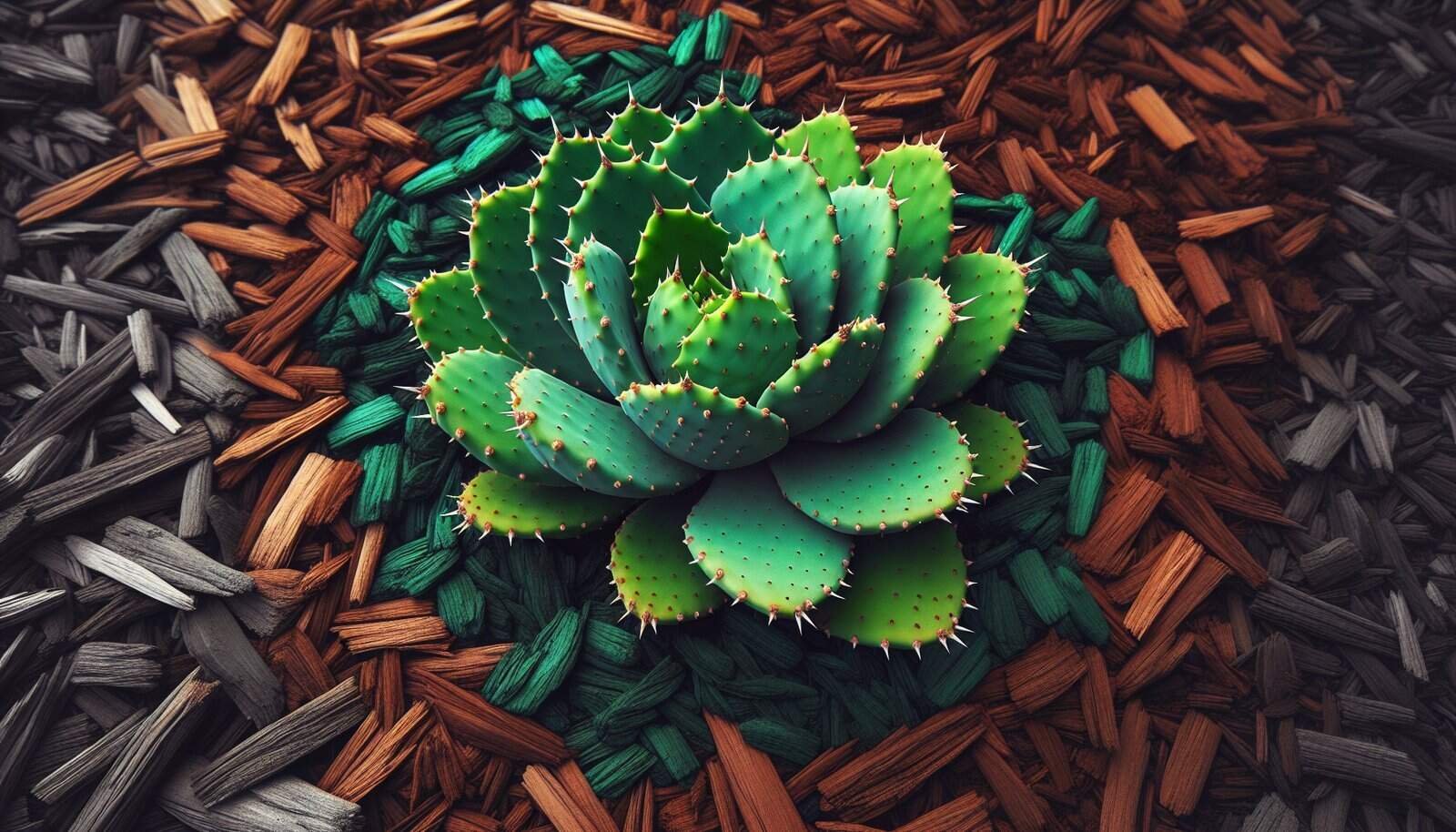Have you ever considered the benefits of mulching for your Nopal cactus and wondered how it could improve the plant’s growth and overall health? Mulching, often overlooked in cacti care, is an incredibly effective gardening practice. It involves placing a layer of material around your plants. At first glance, this might seem like only a necessary task for more traditional garden plants, but mulching can significantly enhance the well-being of your Nopal cactus. Let’s delve into what makes mulching such an essential part of your cactus care routine.

Understanding Mulching
What is Mulching?
Mulching involves placing a protective barrier on the soil around plants. Typically, this is a layer of organic material, such as straw, leaves, wood chips, or compost, but inorganic materials like gravel or plastic can also be used. This layer aids in regulating temperature, retaining moisture, enriching the soil with nutrients, and suppressing weeds, making it a gardener’s best friend.
Types of Mulch
Not all mulch is created equal, and understanding the different types can help you choose the right one for your Nopal cactus. Here’s a breakdown:
Organic Mulch: Includes natural materials such as grass clippings, straw, bark chips, and leaves. They decompose over time and enrich the soil with nutrients.
Inorganic Mulch: Made from man-made materials like rubber, plastic, rocks, or gravel, these do not decompose but can be effective in weed suppression and temperature control.
Living Mulch: This consists of cover crops that grow alongside the plants to provide similar benefits to standard mulching materials.
By understanding the characteristics of different mulching materials, you can choose the best mulch to suit the specific needs of your Nopal cactus.
Benefits of Mulching Nopal Cactus
Moisture Retention
Nopal cactuses are native to arid regions, but they still require adequate moisture for optimal growth. Mulching helps the soil retain water, minimizing evaporation, especially crucial in dry climates. This ensures the cactus receives steady moisture without excessive watering, which can lead to root rot.
Temperature Regulation
Temperature fluctuations can stress a cactus, affecting its growth. Mulch acts as an insulator, keeping the root system of your Nopal cactus at a consistent temperature. In hot climates, it cools the soil, while in colder seasons, it retains warmth. This helps the cactus remain healthy year-round.
Weed Suppression
Weeds compete with your Nopal cactus for water and nutrients. Mulching creates a barrier that prevents weed seeds from germinating and growing. Less competition means your cactus has more resources to thrive and grow robustly.
Soil Improvement
While this benefit primarily pertains to organic mulch, it is nonetheless significant. As organic mulch decomposes, it adds vital nutrients back into the soil, improving its structure and fertility. Over time, this provides a richer environment for your Nopal cactus, enhancing its growth and health.
Pest Repellent
Some mulching materials can deter pests. For example, cedar mulch is known for its insect-repelling properties. Keeping invasive pests away from your Nopal cactus reduces the risk of damage and disease, keeping your plant healthier.
Protection Against Erosion
For outdoor Nopal cactuses, soil erosion can be a concern, especially when planted on a slope. Mulching helps prevent erosion by anchoring the soil in place, reducing the impact of heavy rain and wind, which could otherwise wash away valuable topsoil.
Enhancing Aesthetic Appeal
Beyond practical benefits, mulching can also enhance the beauty of your cactus garden. With various colors and textures available, mulch can complement your garden’s design, providing a polished, well-maintained appearance.

How to Mulch a Nopal Cactus Properly
Choosing the Right Mulch
When selecting mulch for your Nopal cactus, consider using materials that mimic its native environment. Gravel or volcanic rock is often a preferred choice, as they allow for excellent drainage while keeping the soil insulated.
Preparing the Area
Before applying mulch, clear the area around the cactus of weeds and debris. Make sure the soil surface is even, which allows the mulch to lay flat and work effectively. This preparation step is crucial for maximizing the mulch’s benefits.
Applying the Mulch
Spread a layer of your chosen mulch material around the base of the cactus, leaving a few inches directly around the stem free to prevent rot. The mulch layer should be 2-4 inches thick, enough to suppress weeds but not so deep that it smothers the plant.
| Step | Action | Considerations |
|---|---|---|
| 1 | Clear surrounding area | Remove weeds and debris |
| 2 | Select appropriate mulch | Consider drainage and insulation needs |
| 3 | Spread mulch evenly | Maintain a 2-4 inch thickness; avoid direct contact with stem |
Maintaining the Mulch
Mulch can break down over time or be displaced by wind and rain. Regularly check the mulching layer and replenish or adjust it as necessary. To maintain optimal soil health and appearance, replace any decomposing organic mulch with fresh material.

FAQs About Mulching Nopal Cactus
Can Mulching Lead to Overwatering?
While mulch retains moisture, using a material like gravel or rock ensures proper drainage, critical for preventing overwatering. Avoid dense organic mulches directly against the cactus base to promote airflow and reduce the risk of root rot.
How Often Should I Replace Mulch?
This depends on the type of mulch used. Inorganic options like rocks or gravel rarely need replacing, while organic mulch may require replenishment annually or when it decomposes beyond effectiveness.
What if I Have Multiple Cactuses?
Mulching is beneficial for multiple cactuses and can be applied to a grouping for consistent care. It’s efficient and creates a cohesive look in your garden space.
Can Mulching Change Soil pH?
Some organic mulches, like pine needles, can slightly acidify the soil. Monitor soil pH if using such mulches and adjust as necessary to maintain suitable conditions for your Nopal cactus.
Are There Mulch Materials to Avoid?
Certain materials like hay could introduce seeds and weeds, so they should be avoided. Always opt for clean, weed-free options to prevent unwanted growth in your cactus garden.

Conclusion
Mulching is a simple yet powerful practice that enhances the health and beauty of your Nopal cactus. From conserving moisture and regulating soil temperature to suppressing weeds and enriching the soil, mulching offers numerous benefits tailored to the needs of your cactus. By understanding and implementing proper mulching techniques, you can ensure your Nopal cactus thrives in its environment, rewarding you with its vibrant growth and distinct character. So, while you nurture the stunning features of your Nopal with these mulching tips, your garden will inevitably flourish, echoing the vibrant landscapes of its native deserts.


